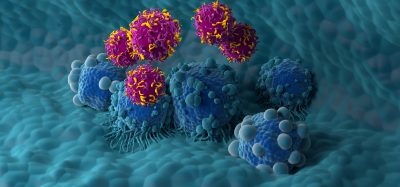How gene regulatory networks maintain FLT3-ITD mutated AML
Posted: 22 December 2023 | Drug Target Review | No comments yet
Using shRNA screening enabled researchers to investigate the roles of individual specific factors in maintaining the network found in AML.


An international team of scientists from the University of Birmingham, Newcastle University, University of Virginia, and the Princess Maxima Centre of Pediatric Oncology in Utrecht have used advanced screening tools to identify how gene regulatory networks (GRNs) maintain a sub-type of blood cancer called FLT3-ITD mutated AML.
Acute Myeloid Leukaemia, a very aggressive common form of leukaemia which is activated by mutations in signalling molecules is maintained by a network of regulatory proteins downstream of these signals. The new research shows this network could be manipulated to kill AML cells.
Using an AML model, the researchers identified connections between transcription factors (TF) and the genes they bind to that together form a complex network (GRN) that is highly specific for FLT3-ITD AML cells as compared to healthy cells.
The team found 100 genes within the GRN, using a screening method developed in Newcastle, that are significant for AML growth and survival. They studied several of these genes in more detail to observe the effect of targeting them. Analysis of the TF RUNX1 demonstrated that RUNX1 is a crucial factor in keeping the GRN stable.
Notably, the RUNX1 protein could be blocked by using a small molecule inhibitor developed by Dr John Bushweller of the University of Virginia. This molecule leads to the collapse of the network that maintains FLT3-ITD AML.
Senior authors of the paper Dr Constanze Bonifer and Dr Peter Cockerill, from the Institute of Cancer and Genomic Sciences at the University of Birmingham said: “The FLT3-ITD sub-type of acute myeloid leukaemia that we have been studying has very poor outcomes with high relapse rates among those who do go into remission. We set out to identify very specific targets that are required for AML cancer cells to regulate themselves, that could potentially lead to new treatments.”
They continued: “Such networks act a bit like a computer programme that runs processes to maintain AMLs and which are different to those networks found in normal cells. Our research has found that knocking out such factors resulted in the network shutting down, and which may lead to the cancer cells dying off as they are unable to replicate.”
Screening
The researchers mapped the transcription factor binding sites within AML-specifically expressed genes to identify potential protein targets that regulate AML cancer cells. They then compared normal cells to malignant cells to discover which genes promote AML survival and targeted them specifically.
A type of screening technique named shRNA enabled the team to investigate individual specific factors’ roles in maintaining the network found in AML. As the TFs operate within an interactive network, the team then observed the effect of targeting individual factors on the rest of the network. They found that specific proteins including RUNX1 were key for the maintenance of the whole GRN.
Dr Olaf Heidenreich, now at the Princess Maxima Centre for Paediatric Oncology in Utrecht, commented: “Many researchers in the world use techniques called ‘genome wide screening’ where they eliminate every gene in cancer cells to identify those genes that are essential for the growth of these cells. However, this method identifies many genes that are also required for healthy cells. Therefore, finding genes that are only important for cancer cells is a bit like finding a needle in a haystack.”
He concluded: “Besides testing the effect of select targets on AML growth, our work will provide an important resource for the scientific community to home in on the targets that really matter”.
This study was published in Cell Reports.
Related topics
Cancer research, Drug Targets, Genetic Analysis, Screening, Small molecule
Related conditions
acute myeloid leukaemia (AML), Cancer Research
Related organisations
Newcastle University, Princess Maxima Centre of Pediatric Oncology, University of Birmingham, Virginia University








